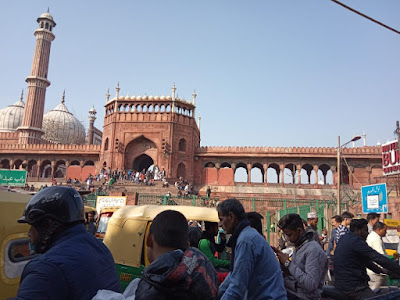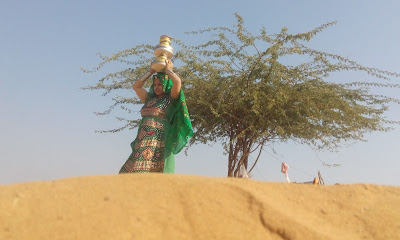Little wonders of Delhi
Delhi has many historic monuments like Lal Quila and
Qutab Minar and landmarks like Lotus temples. They are popular among tourists.
Very few would know the existence of Majnu ka Tilla or its history. In fact,
the place has much less to offer as a tourist destination. But the place still
attracts people like me because of its history.
After getting down at Secretariat metro station, I
took an e-rickshaw ride through narrow lanes and by lanes to reach the mini
Tibet commonly named "Majnu ka Tilla". If you just go by the name of
the place, you would believe that the story of the place is someway related to Laila-Majnu
story where "Majnu" sacrifices his life for the sake of his love for
"Laila".
 |
| The real Delhiii |
 |
| Entrance of Majnu ka Tilla(Tibetan Colony) |
The historic name of area, literally means the
hillock of Majnu, after the tilla or mound where during the reign of Sikandar
Lodhi (1489–1517) on Delhi Sultanate, a local Iranian Sufi mystic, Abdulla
nicknamed Majnu (lost in love), met Sikh Guru, Guru Nanak on 20 July 1505.
Majnu ferried people across the Yamuna river for free as a service to God, his
devotion resulted in the Nanak staying here till end July. In later history
Sikh military leader Baghel Singh Dhaliwal built the Majnu ka Tila Gurudwara to
commemorate the stay in 1783, and the sixth Sikh guru, Guru Har Gobind also
stayed here. Today it is one of oldest extant Sikh shrines in Delhi and the
surrounding estate of donated by early 19th-century Sikh emperor, Ranjit Singh.
 |
| Narrow lanes of Mini Tibet |
Majnu Ka Tilla area has three main residential
settlements - Aruna Nagar, New Aruna Nagar and Old Chandrawal village, which
was built up in early 1900s, when British government settled labourers involved
in the construction of the Central Secretariat buildings, during the
construction of the New Delhi. The next round of settlement came
post-independence in 1958-59, when Aruna Nagar was developed by the Land and
Development wing of the Ministry of Urban Development as it disbursed 925 plots
of 40 sq. yard each, to people resettled here from various part of North Delhi.
The Tibetan refugee camp later named New Aruna Nagar developed after 1960.
Just as Aruna Nagar was developing, the 1959 Tibetan
uprising took place in March, most residents of Majnu-ka-tilla left Tibet in
1959-60, when the Dalai Lama too went into exile to Dharamshala. Soon, a small
Tibetan refugee camp up across the road, on the Yamuna riverbed. The land was
allotted by the government to the refugees in 1960. After the Sino-Indian War
in 1962, many of the refugees who had previously settled temporarily near the
Indo-Chinese border shifted here. Today, it is home to second generation of
Tibet refugees and is also known as Samyeling, through colloquially as
"Little-Tibet" or "Mini-Tibet".
 |
| Lapping |
The place is a perfect place for people looking for
some authentic Tibetan cuisine. If you want a culinary journey of the Tibetan
palates, restaurants like Rigo, Ama, Dolma house and Asian kitchen won’t
disappoint you. One can see people digging into their plates of Momos, Thukpa, Lapping,
Thentuk, Tigmo and Shabalay at any time of the day. Though the taste was very
different from our Indian cuisine, I did relish the Tibetan food.
How does Lapping tastes
 |
| Tibetan Tea |
But there was something that did disappoint me. Even
though India is their adopted homeland, the Tibetans are unaware of the national
language - India. Not only that, they are also ignorant of the cultural
practices of the country. Well, I need to explore deeper to understand that why
they remain alienated from their immediate surrounding even after living here
for more than half a century. But Buddhist teachings always reveal new meaning
of life for me and in the pursuit, got a chance to interact a monk.
A visit to the Monestary and a short conversation with the Monk(kindly bare with the quality of the video)
 |
| Me with a Monk |
 |
| Inside the Monestary( surprised to see Beer and Whisky as an offering) |
My next stop in Delhi was at one of the most famous culinary destinations Karim, the oldest historic restaurant located near Jama Masjid, Gali Kababian. The restaurant was established in 1913.
 |
| Karim (Since 1913) |
 |
| At Karim still the food is cooked in the same way as it was cooked during Mugals |
In mid 19th century, Mohammed Aziz was a cook in the
royal court of Mughal Emperor. In 1911, when Delhi Durbar was held for the
coronation of the King George V, one of Aziz's sons Haji Karimuddin moved back
to Delhi with an innovative idea of opening a Dhaba to cater the people coming
from all over India to join the coronation. Haji Karimuddin started the Dhaba
selling just two items of Aloo gosht (mutton with potatoes) and Daal (lentil curry)
served with Rumali Roti, saying, “I want to earn fame and money by serving the
royal food to the common man". Today, the fourth generation is running the
show in a brand name Karim Hotels Pvt Ltd.
 |
| The narrow lane just opposite to Jama Mosque leading to Karim |
As it was just a day trip and I had my train in
evening, I did not have time for many places. But how can I leave the city
without visiting the shoppers’ paradise, Sarojini Market. If there is a perfect
place on earth for hanging around then it is the busy flea market Sarojini
Nagar Market.
 |
| Crowd of the India's biggest Shopping Paradise |
As I have already mentioned that it was just a day trip so now it was the time to bid adieu.......
Double Decker Zindabaad!!!!!!
Tips:-
i) Friends!!!!! Delhi is a blend of culture and modernity and in order to explore the essence of the city one must have a week in hand. As I had just a day therefore I could not explore much.
ii) When you are in Sarojini Market do bargain as much as you can and beware with the pick-pocketers.
iii) If you have time and you are a big foodie then must Qureshi Kabaab. It is in Old Delhi.
iv) Friends!!!! I know there are lot to explore in Delhi as Delhi is my second home but I just had a day and that also morning 11:00 a.m to evening 4:30 p.m. as at 5:30 p.m I had my train to Jaipur. But next time will bring new .
Request:-
Friends, please do mention in the comment box if you truly liked it or if you find something lacking in it. That would be highly beneficial to me.





Hi author!
ReplyDeleteI was wondering about majnu ka tilla and found your blog. This has a useful information and enjoyed the way u have experienced. Keep it up.
However, the narration with the monk had disappointed me , may be the translator didn't translate properly.